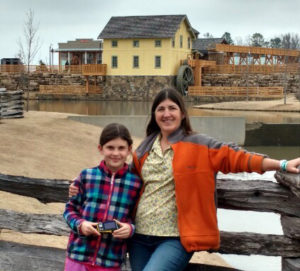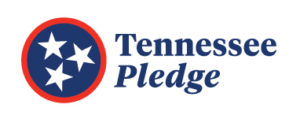May 6, 2020 – The Tennessee Association of Museums (TAM) has elected Polly Brasher as their president of the organization. Founded in 1960, TAM serves individuals and organizations who work for and with Tennessee museums through professional development, collaboration and advocacy.
Polly was the very first employee of Discovery Park of America and is currently the director of education at the park. With years of teaching and museum experience, she brings a great wealth of knowledge to the team.
Recently, we sat down with Polly and asked her a couple of questions regarding her work in the museum world, why it’s important for other museum professionals to join organizations like TAM and what advice she would give someone who wants to succeed in the museum industry.
What is your favorite part of working in the museum industry? Museums are non-competitive. I grew up in a highly competitive business, began working there at the age of 8. If you found something that worked, something that sold well, or something that won awards, it was kept in-house as long as possible. In the wonderful world of museums, we share the best ideas and are eager to help one another. Of course, we also share what did not work well, but again, it’s to help our colleagues. This is a truly beautiful thing.
Why do you think it’s important for others working in museums to join organizations like TAM? TAM is a grand way to share and learn. We offer conferences and workshops, of course, but we also offer a network. When I was tasked with creating the organizational chart for Discovery Park, I did a great deal of research, but what I found was that there is no industry standard, and the charts out there are extremely dissimilar. After a workshop in Brownsville, three TAM board members sat with me, going over the charts I had made and helping to choose the best and then tweak it to make it even better. Without TAM, I might as well have been throwing darts at a wall to choose one. Today, I have many more than three people on whom I can call for advice and help.
What do you think is the biggest challenge facing museum professionals as they begin to reopen in the coming months? The unknown is always the biggest challenge, under any circumstance. Right now, though, the blessing is that we are all wondering the same things: When is the right time to open, what is the correct way to open, what is the best way to protect staff and volunteers as well as guests? We are all working toward the same goal at the same time. With this shared focus, it is great time to work together even more than we ever have.
What difference do you think Discovery Park has made to the region? Discovery Center was designed to be striking and unique, to stop traffic that is traveling at 70 miles an hour. The park was designed to be a place of learning and exploration. What Discovery Park is, though, is a beacon of hope. When Goodyear closed, people looked to Discovery Park for hope and jobs. When people are having a bad day or a difficult time, they come to the park to walk or to spend quality time with family or to just focus on something beautiful or interesting for a while. Now, in the midst of a pandemic, I think people are watching to see how we handle the crisis. When we reopen our doors, I believe, and the survey results will back me up on this, that people will breathe a little easier and know that there is still hope and a place to go for comfort, beauty, learning and fun.
What advice would you give someone who wants to have a successful career in the museum industry? Be curious. If you are not interested in the things, places and people around you, then you need a different career path. The museum world is about the discoveries, failures, struggles, innovations and successes of people. We are storytellers, and the stories are sometimes unpleasant, but we have to be truth tellers. We cannot settle for a glossed-over version of anything. We research and validate and then tell the story. Sometimes we have to say we do not yet know, but curiosity will continue to lead us to more answers.





